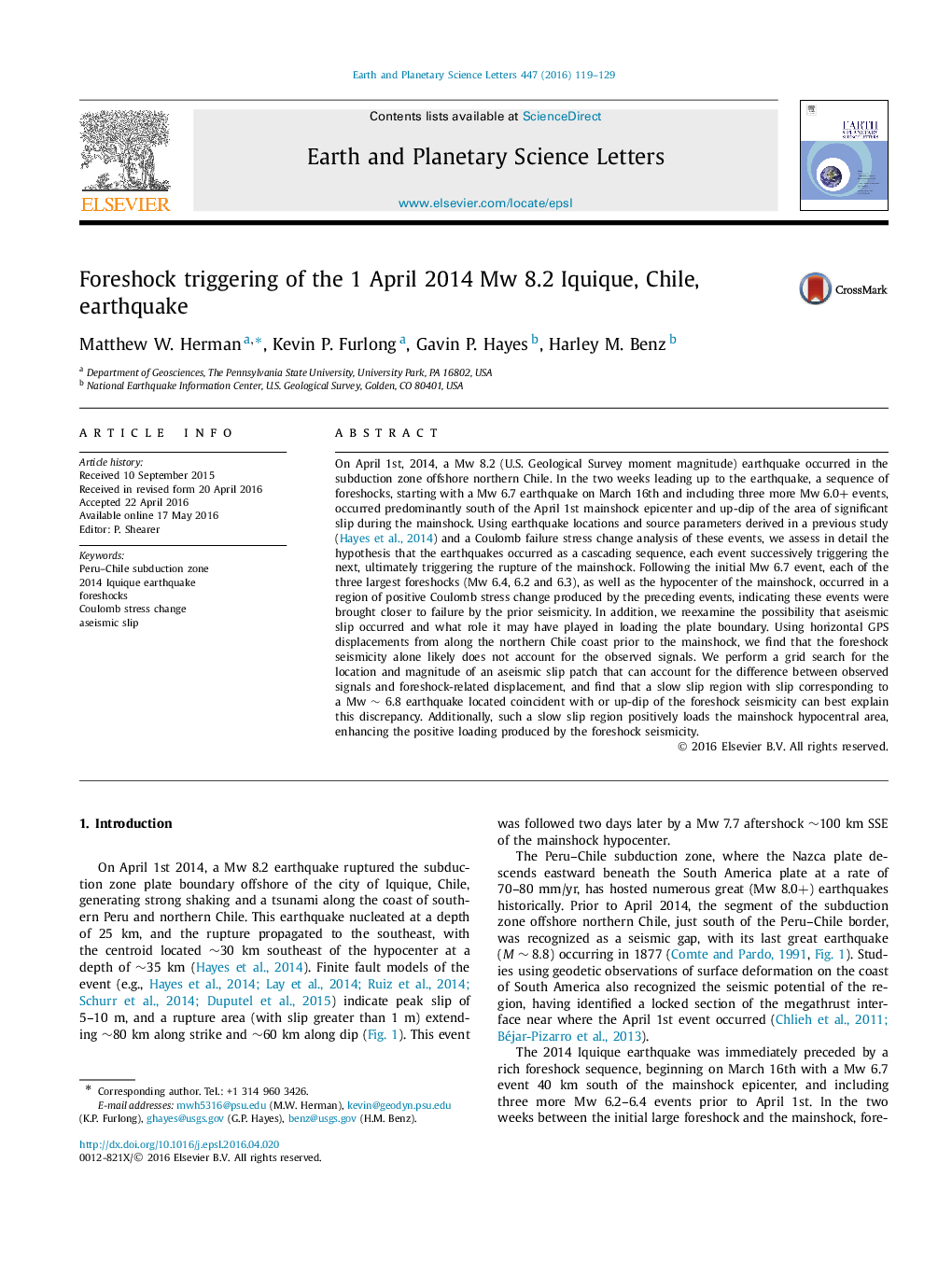| کد مقاله | کد نشریه | سال انتشار | مقاله انگلیسی | نسخه تمام متن |
|---|---|---|---|---|
| 6427473 | 1634709 | 2016 | 11 صفحه PDF | دانلود رایگان |

- Coulomb stress change analysis of earthquakes preceding 2014 Iquique earthquake.
- Majority of foreshocks occurred in areas positively loaded by previous seismicity.
- Mw 8.2 rupture began in area loaded by foreshocks.
- Slow slip may have enhanced loading on subduction megathrust.
On April 1st, 2014, a Mw 8.2 (U.S. Geological Survey moment magnitude) earthquake occurred in the subduction zone offshore northern Chile. In the two weeks leading up to the earthquake, a sequence of foreshocks, starting with a Mw 6.7 earthquake on March 16th and including three more Mw 6.0+ events, occurred predominantly south of the April 1st mainshock epicenter and up-dip of the area of significant slip during the mainshock. Using earthquake locations and source parameters derived in a previous study (Hayes et al., 2014) and a Coulomb failure stress change analysis of these events, we assess in detail the hypothesis that the earthquakes occurred as a cascading sequence, each event successively triggering the next, ultimately triggering the rupture of the mainshock. Following the initial Mw 6.7 event, each of the three largest foreshocks (Mw 6.4, 6.2 and 6.3), as well as the hypocenter of the mainshock, occurred in a region of positive Coulomb stress change produced by the preceding events, indicating these events were brought closer to failure by the prior seismicity. In addition, we reexamine the possibility that aseismic slip occurred and what role it may have played in loading the plate boundary. Using horizontal GPS displacements from along the northern Chile coast prior to the mainshock, we find that the foreshock seismicity alone likely does not account for the observed signals. We perform a grid search for the location and magnitude of an aseismic slip patch that can account for the difference between observed signals and foreshock-related displacement, and find that a slow slip region with slip corresponding to a Mw â¼ 6.8 earthquake located coincident with or up-dip of the foreshock seismicity can best explain this discrepancy. Additionally, such a slow slip region positively loads the mainshock hypocentral area, enhancing the positive loading produced by the foreshock seismicity.
Journal: Earth and Planetary Science Letters - Volume 447, 1 August 2016, Pages 119-129